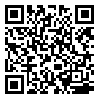Volume 17, Issue 1 (7 2004)
jdm 2004, 17(1): 32-40 |
Back to browse issues page
Abstract: (5767 Views)
Statement of Problem: Radiography is the most common technique in working length determination, however, because of its limitations is not considered as an ideal technique. Its application, particularly for children due to radiation hazards, technical problems in young and unco-operative children and the superimposition of permanent teeth bud on primary teeth root, lead to numerous problems.
Purpose: The goal of this study was to evaluate the accuracy of an electronic apex locator (EAL) in working length determination of primary teeth.
Materials and Methods: In this in-vitro study 96 canals of the extracted primary teeth, with at least 2/3 of the root length remained, were investigated. There were no obstructed canal, previous root canal therapy and perforation of pulp chamber floor. All working lengths were also measured by radiography. The results of Raypex 4 and radiography were compared with actual root canal lengths determined by direct observation. The applied EAL, in this study was called Raypex 4, a new device belonged to the fourth generation (Ratio Type). The results were analyzed by Chi-Square and Pearson correlation statistical tests.
Results: The accuracy of Raypex and radiography were 61.5% and 63.5%, respectively. The differences between Reypex 4 root canal length measurements and those of direct observation were not significant (P=0.08), but such difference between radiography and direct observation was statistically significant (P=0.01). The diameter of the apical foramen (the site of canal opening) did not affect on Raypex 4 accuray (P>0.05).
Conclusion: Considering the acceptable safetyness, Painlessness, simple and rapid application and an accuracy comparable to that of radiography, the use of Raypex4 EAL for the measurement of primary teeth length is suggested.
Purpose: The goal of this study was to evaluate the accuracy of an electronic apex locator (EAL) in working length determination of primary teeth.
Materials and Methods: In this in-vitro study 96 canals of the extracted primary teeth, with at least 2/3 of the root length remained, were investigated. There were no obstructed canal, previous root canal therapy and perforation of pulp chamber floor. All working lengths were also measured by radiography. The results of Raypex 4 and radiography were compared with actual root canal lengths determined by direct observation. The applied EAL, in this study was called Raypex 4, a new device belonged to the fourth generation (Ratio Type). The results were analyzed by Chi-Square and Pearson correlation statistical tests.
Results: The accuracy of Raypex and radiography were 61.5% and 63.5%, respectively. The differences between Reypex 4 root canal length measurements and those of direct observation were not significant (P=0.08), but such difference between radiography and direct observation was statistically significant (P=0.01). The diameter of the apical foramen (the site of canal opening) did not affect on Raypex 4 accuray (P>0.05).
Conclusion: Considering the acceptable safetyness, Painlessness, simple and rapid application and an accuracy comparable to that of radiography, the use of Raypex4 EAL for the measurement of primary teeth length is suggested.
| Rights and Permissions | |
 |
This work is licensed under a Creative Commons Attribution-NonCommercial 4.0 International License. |


